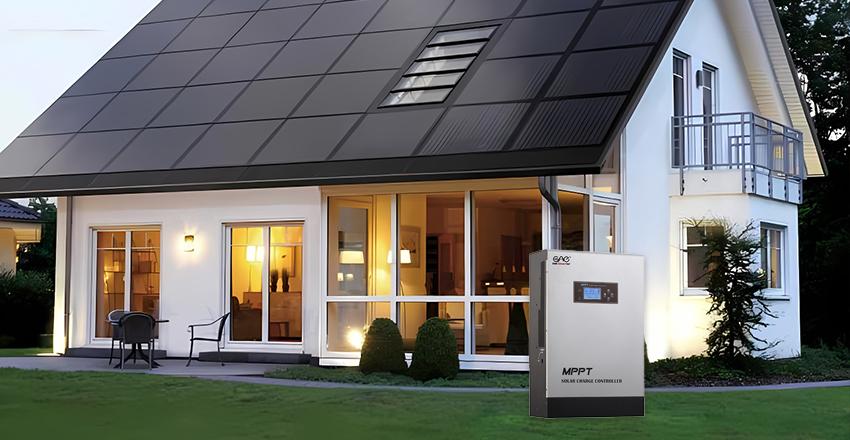Solar string inverters are essential components of solar power systems, converting the direct current (DC) produced by solar panels into usable alternating current (AC) for homes and businesses. While string inverters are generally reliable and efficient, like any electrical equipment, they can encounter problems over time. Understanding the common issues with solar string inverters and how to troubleshoot or fix them can help ensure your solar system continues to operate efficiently. Here are some of the most common issues and how to resolve them.
1. Inverter Not Turning On
Issue: One of the most common problems with a solar string inverter is it failing to turn on. This issue could be caused by a range of factors, including electrical faults, poor wiring, or incorrect inverter settings.
Possible Causes:
- Faulty connections or wiring issues.
- Incorrect inverter settings.
- Insufficient solar power (e.g., cloudy weather or panel shading).
- Tripped circuit breakers.
- Inverter hardware failure.
Solution:
- Check the Circuit Breaker: Verify that the circuit breaker is not tripped. If it is, reset it and monitor if the inverter powers on.
- Inspect Wiring Connections: Look for any loose, corroded, or broken connections. Ensure that all connections are secure and clean.
- Verify Solar Input: Check if the solar panels are generating power. Ensure they are not shaded or dirty, as this can prevent proper energy production.
- Consult the Manual: Review the inverter’s manual to confirm correct settings, such as DC voltage and input power specifications.
2. Low Power Output
Issue: A drop in energy output can result from various factors, including panel shading, dust buildup, or issues with the inverter itself.
Possible Causes:
- Partial shading of the solar panels.
- Dirty panels or obstructions blocking sunlight.
- Faulty inverter or malfunctioning MPPT (Maximum Power Point Tracking) algorithm.
- Wiring issues or poor connections.
Solution:
- Clean the Solar Panels: Ensure that the panels are free from dust, dirt, and debris. Clean them regularly for optimal performance.
- Check for Shading: Inspect the area around your panels for any new obstructions, such as trees or buildings, that may be casting shadows on them.
- Monitor MPPT Settings: Verify that the inverter’s MPPT is functioning correctly. If the MPPT is not working efficiently, it may need a reset or professional servicing.
- Inspect the Wiring: Ensure all connections are intact and that there are no damaged wires affecting the power flow.
3. Inverter Overheating
Issue: Solar inverters can overheat if they are working harder than usual or if ventilation is insufficient. Overheating can damage the internal components of the inverter and lead to system failure.
Possible Causes:
- Poor ventilation or airflow around the inverter.
- Excessive load on the inverter.
- Inverter malfunction due to dust buildup inside.
- Ambient temperature too high for efficient inverter operation.
Solution:
- Ensure Proper Ventilation: Make sure the inverter is installed in a well-ventilated area, with adequate space around it for airflow. Avoid placing the inverter in direct sunlight or enclosed spaces.
- Clean the Inverter: Dust can accumulate inside the inverter, blocking airflow. Clean the inverter’s vents regularly to prevent dust buildup.
- Reduce Load: Check if the inverter is being overworked by drawing too much power. If necessary, reduce the energy demand on the system.
- Monitor Temperature: Ensure that the ambient temperature around the inverter is within the recommended operating range, typically between 10°C to 30°C.
4. Inverter Display Shows Error Codes
Issue: Modern solar string inverters often have display screens that show error codes to help diagnose problems. These codes can indicate a wide variety of issues, including inverter malfunctions, grid connection problems, or panel issues.
Possible Causes:
- Grid-related issues, such as voltage fluctuations or disconnections.
- Internal inverter faults.
- Communication errors between the inverter and solar panels.
Solution:
- Refer to the Manual: Error codes will often be accompanied by an explanation in the inverter’s user manual. Consult the manual to identify the specific issue and recommended steps to resolve it.
- Reset the Inverter: If the error code persists after fixing the underlying issue, try resetting the inverter by turning it off for a few minutes and then turning it back on.
- Check Grid Connection: If the issue is related to grid voltage, contact your utility provider to confirm that the grid is operating normally.
- Seek Professional Help: If the error code indicates a serious internal malfunction, such as a fault in the inverter’s power electronics, you may need to call a professional technician for repair.
5. Inverter Not Syncing with the Grid
Issue: Inverters are designed to synchronize with the grid to feed excess electricity back into the power system. If synchronization fails, the inverter will stop producing power or disconnect from the grid.
Possible Causes:
- Grid voltage irregularities or power surges.
- Faulty grid connection or breaker tripping.
- Internal inverter faults or miscommunication with the grid.
Solution:
- Check Grid Voltage: Ensure that the grid voltage is stable and within the inverter’s acceptable range. If there are issues with grid voltage, contact your utility provider.
- Reset Circuit Breaker: If the inverter’s grid connection has been disconnected due to a breaker tripping, reset the breaker and monitor the inverter’s response.
- Consult a Professional: If the inverter continues to fail in synchronizing with the grid, contact a qualified technician for assistance in diagnosing and fixing the problem.
Conclusion
Solar string inverters are vital components of a solar power system, converting DC power from solar panels into usable AC electricity. While they are generally reliable, occasional issues may arise. Understanding the common problems, such as low power output, overheating, or error codes, and knowing how to fix them can help keep your system running smoothly. Regular maintenance, including cleaning and checking connections, as well as timely troubleshooting, will extend the lifespan and efficiency of your solar system. For more complex issues, seeking professional help may be necessary to ensure optimal performance.
